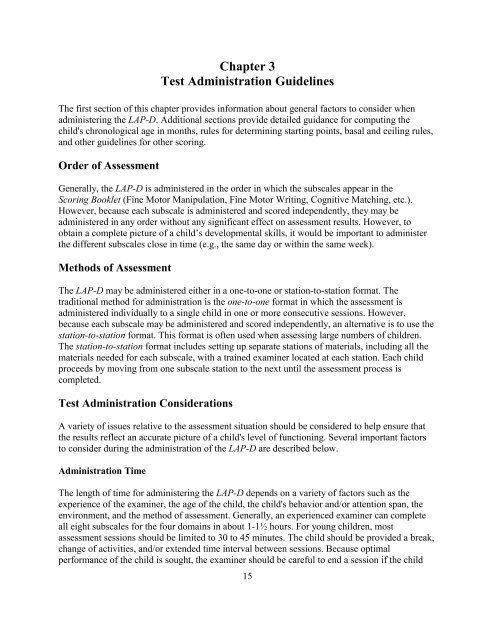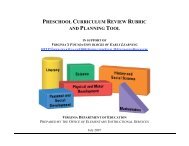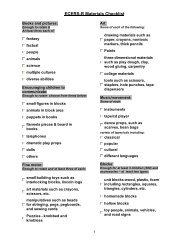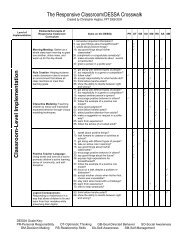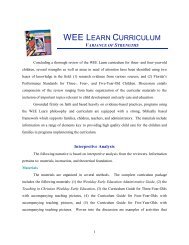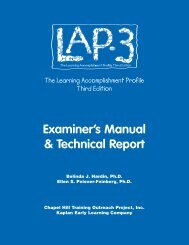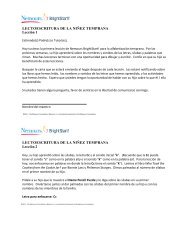Examiner's Manual & Technical Report - Kaplanco.com
Examiner's Manual & Technical Report - Kaplanco.com
Examiner's Manual & Technical Report - Kaplanco.com
- No tags were found...
You also want an ePaper? Increase the reach of your titles
YUMPU automatically turns print PDFs into web optimized ePapers that Google loves.
Chapter 3Test Administration GuidelinesThe first section of this chapter provides information about general factors to consider whenadministering the LAP-D. Additional sections provide detailed guidance for <strong>com</strong>puting thechild's chronological age in months, rules for determining starting points, basal and ceiling rules,and other guidelines for other scoring.Order of AssessmentGenerally, the LAP-D is administered in the order in which the subscales appear in theScoring Booklet (Fine Motor Manipulation, Fine Motor Writing, Cognitive Matching, etc.).However, because each subscale is administered and scored independently, they may beadministered in any order without any significant effect on assessment results. However, toobtain a <strong>com</strong>plete picture of a child’s developmental skills, it would be important to administerthe different subscales close in time (e.g., the same day or within the same week).Methods of AssessmentThe LAP-D may be administered either in a one-to-one or station-to-station format. Thetraditional method for administration is the one-to-one format in which the assessment isadministered individually to a single child in one or more consecutive sessions. However,because each subscale may be administered and scored independently, an alternative is to use thestation-to-station format. This format is often used when assessing large numbers of children.The station-to-station format includes setting up separate stations of materials, including all thematerials needed for each subscale, with a trained examiner located at each station. Each childproceeds by moving from one subscale station to the next until the assessment process is<strong>com</strong>pleted.Test Administration ConsiderationsA variety of issues relative to the assessment situation should be considered to help ensure thatthe results reflect an accurate picture of a child's level of functioning. Several important factorsto consider during the administration of the LAP-D are described below.Administration TimeThe length of time for administering the LAP-D depends on a variety of factors such as theexperience of the examiner, the age of the child, the child's behavior and/or attention span, theenvironment, and the method of assessment. Generally, an experienced examiner can <strong>com</strong>pleteall eight subscales for the four domains in about 1-1½ hours. For young children, mostassessment sessions should be limited to 30 to 45 minutes. The child should be provided a break,change of activities, and/or extended time interval between sessions. Because optimalperformance of the child is sought, the examiner should be careful to end a session if the child15


